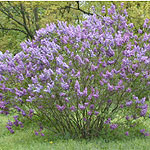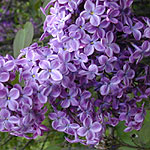Egolf & Pooler, 2006
‘Old Glory’, S. ×hyacinthiflora
Egolf & Pooler; 2006; S III-VII
syn. – NA62974; PI 641803
{S. ×hyacinthiflora ‘Sweet Charity’ × S. ×hyacinthiflora ‘Pocahontas’}
USDA-ARS Notice of Release [March 24, 2006]; Pooler, HortScience 43(2):544–545 [2008]; nomenclatural standard deposited at United States National Arboretum Herbarium (NA); NA-0041455; Hanburyana 4:56 [2009]; Photo on Jorgovani/Lilacs 2015 DVD.
Old Glory is a common nickname for the Flag of the United States, bestowed by William Driver, an early nineteenth century American sea captain.
cultivar name registered 2007; name established and accepted.
Международный регистр названий культиваров рода Syringa L.
Syringa ‘Old Glory’
(NA 62974; PI 641803)
USDA Zones 5-7.
‘Old Glory’ is a selection from a controlled hybridization between Syringa ‘Sweet Charity’ and Syringa x hyacinthiflora ‘Pocahontas’ made by Don Egolf in 1978 and released in March 2006. It is a product of the lilac hybridization program at the U.S. National Arboretum and follows the release of ‘Betsy Ross’ in 2000.
‘Old Glory’ was selected for its abundant fragrant bluish-purple flowers, rounded growth habit, and disease tolerant foliage. It shows good field tolerance to Cerco-spora blight and Pseudomonas syringae in warmer climates where these diseases are a problem.
Height and width: 11.5 feet tall and 13.5 feet wide in 25 years.
Habit: Deciduous, relatively compact, rounded shrub.
Foliage: Thick, dark green, mildew-tolerant foliage.
Flowers: Medium size, abundant, bluish-purple fragrant inflorescences in early spring.
Semi-hardwood cuttings taken in late spring immediately after flowering root in six weeks under mist with 3000-5000 ppm IBA, or it can be tissue cultured.
Background planting in the shrub border, specimen plant, deciduous hedge or screen, mass planted in large areas.
Еще более подробно об этом сорте можно почитать в статье Маргарет Пулер на сайте American Society for Horticultural Science



Оставить комментарий
Пожалуйста, зарегистрируйтесь, чтобы иметь возможность оставлять комментарии.